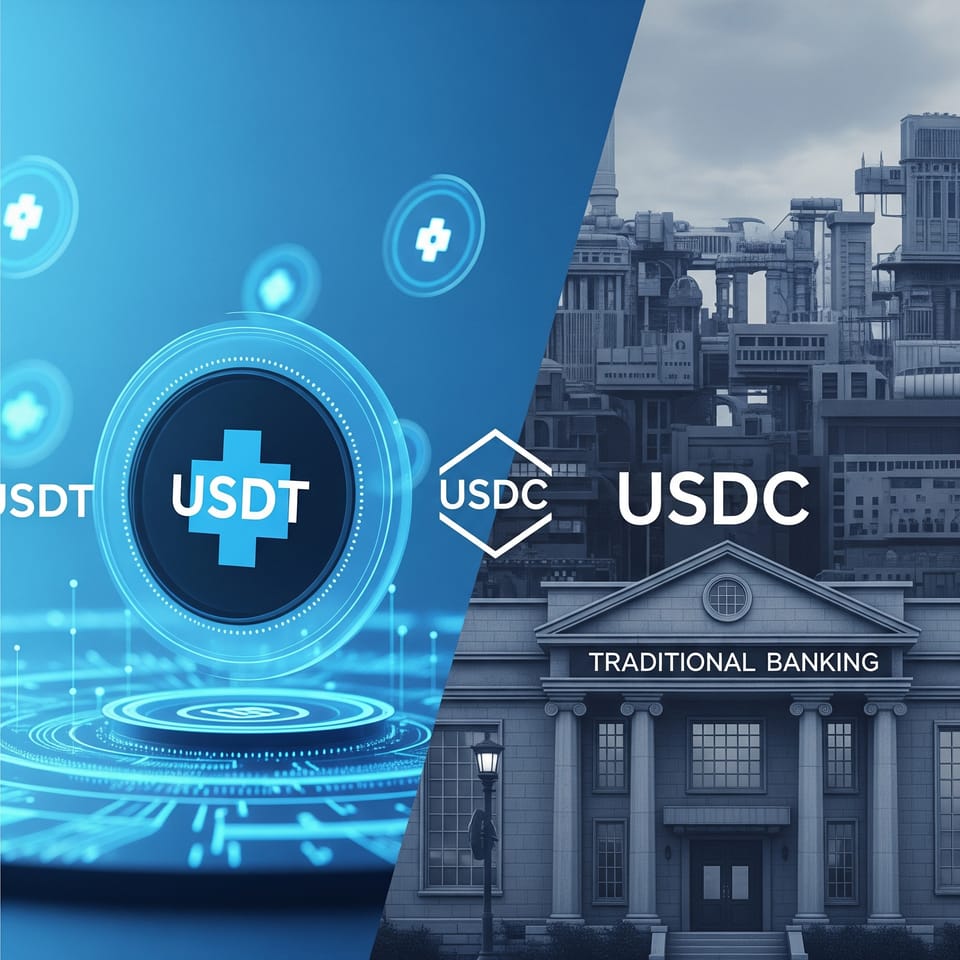This One Stablecoin Trick Banks Don’t Want You to Know About

Introduction: What Are Stablecoins?
As we navigate the rapidly evolving world of crypto in 2025, one term continues to stand out: stablecoins.
But what are stablecoins really?
A stablecoin is a type of cryptocurrency that maintains a fixed value, usually pegged to a stable asset like the U.S. dollar, euro, or even gold. Unlike volatile coins like Bitcoin or Ethereum, stablecoins are existed to provide price stability, making them useful for real-world transactions, payment, and financial foundation.
According to UBS, stablecoins are the “bridge” between traditional finance and decentralized systems.
How Do Stablecoins Work?
Stablecoins derive their value by being pegged to real-world assets and are backed by reserves. There are three main types:
- Fiat-collateralized stablecoins: Backed 1:1 by fiat reserves (e.g., USDC, USDT)
- Crypto-collateralized stablecoins: Backed by other crypto assets (e.g., DAI)
- Algorithmic stablecoins: Use supply/demand mechanics (e.g., now mostly defunct due to failures)
ABC News explains that this backing helps ensure that a $1 stablecoin can always be redeemed for $1, helping eliminate price change.
Protect Your Stablecoins with a Ledger Wallet
If you’re exploring stablecoins, don’t forget about security. Whether you’re holding USDT, USDC, or any other stablecoin, keeping your crypto safe is just as important as choosing the right asset.
That’s why I always recommend using a hardware wallet like Ledger.

💡 Check out my full blog post on how to set up and use a Ledger crypto wallet to keep your digital assets secure from hacks and scams.
Why Are Stablecoins Important?
Here’s why stablecoins matter more than ever in 2025:
- Stablecoins vs. crypto: Unlike Bitcoin, which can swing 10% in a day, stablecoins hold steady, always equal to $1.
- Cross-border payments: They enable fast, low-cost international money transfers without using banks.
- DeFi and staking: Many stablecoins offer yield-bearing opportunities, functioning similarly to money market funds.
- E-commerce integration: Businesses and individuals can transact globally without worrying about volatility.
- Bridge between CeFi and DeFi: Stablecoins connect traditional finance to the blockchain economy.
As RedotPay puts it, stablecoins are now basis in the financial ecosystem.
Top Use Cases for Stablecoins in 2025
According to multiple sources including Fintech Takes and Ripple, here are the top use cases of stablecoins right now:
- RemittancesFast and cheap international money transfers with minimal fees and immediate settlement.
- Digital PaymentsMerchants can accept stablecoins without worrying about crypto volatility.
- Decentralized Finance (DeFi)Used in lending, yield farming, staking, and liquidity provision on decentralized platforms.
- Payroll and Gig EconomyFreelancers and remote workers are increasingly paid in stablecoins, enabling instant cross-border payments.
- E-commerce and RetailCompanies like Shopify and PayPal have already integrated stablecoins for smoother online payments.
- Trading and HedgingTraders move to stablecoins to lock in profits or hedge against market downturns.
Are Stablecoins the Most Popular Crypto Asset?
A recent Chainalysis report confirms that stablecoins are now the most transacted digital asset. In fact:
- Stablecoins account for nearly 60% of crypto transaction volume globally.
- Adoption is strongest in emerging markets, where inflation erodes local currencies.
- Governments and banks are beginning to build on stablecoin infrastructure, signaling mass adoption.
This marks a shift from speculation to real-world utility, a sign of crypto’s growing maturity.
Risks and Regulations: What to Know
While stablecoins offer many advantages, they are not risk-free:
- Reserve transparency: Some stablecoins lack audit clarity on whether they truly hold enough reserves.
- Regulatory scrutiny: Governments are drafting legislation like the GENIUS Act in the U.S. to regulate stablecoin issuers.
- Depegging risk: Algorithmic stablecoins have failed in the past, causing massive losses (e.g., TerraUSD crash).
According to ABC News, stablecoins may eventually come under similar regulation as banks, especially if they become mainstream financial tools.
The Future of Stablecoins: 2025 and Beyond
The next phase of stablecoin evolution will likely include:
- CBDCs (Central Bank Digital Currencies): Government-issued stablecoins to replace cash.
- Mainstream integrations: Used in Google Pay, Apple Pay, and other financial apps.
- Yield generation: More stablecoins will offer interest for holding.
- Universal wallets: One app to hold all your stablecoins, crypto, and fiat.
As highlighted by Ripple, stablecoins are not just a trend—they are the financial rails of the future.
Final Thoughts: Should You Use Stablecoins?
If you want to transact globally, avoid crypto volatility, earn passive yield, or simply explore DeFi—stablecoins are your best bet in 2025.
They’re no longer just for crypto enthusiasts. They’re now tools for global commerce, personal finance, and borderless innovation.
Want More?
Subscribe to my blog for more insights into:
- Cryptocurrency trading bots like Freqtrade
- DeFi opportunities with stablecoins
- Real-world blockchain use cases
- 24/7 crypto automation and analytics
